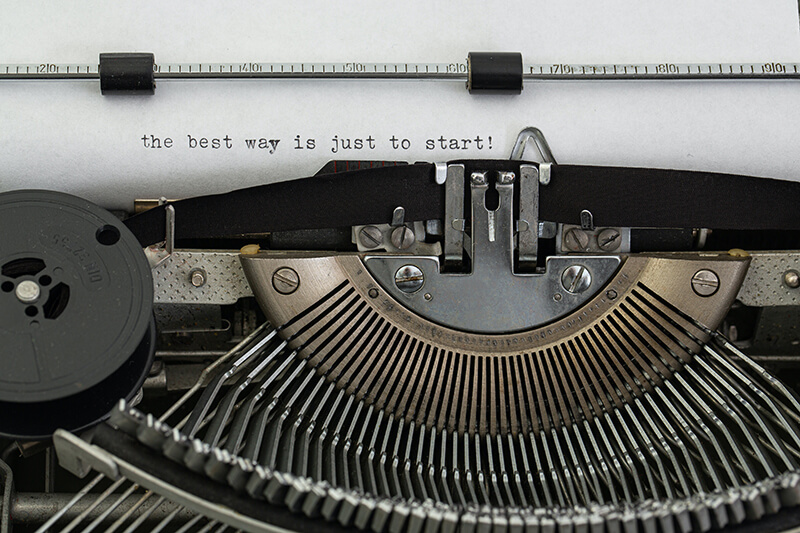
How To Write A History Research Paper: The Do’s and Don’ts
 The question, How to write a history research paper is something all students at some point in their academic lives will ask. It’s an exciting type of academic paper to write because essentially, students take on the role of historians. They are able to deduce their own arguments and conclusions. With their own analysis of historic evidence from primary sources, they provide new information or added value to their chosen topics.
The question, How to write a history research paper is something all students at some point in their academic lives will ask. It’s an exciting type of academic paper to write because essentially, students take on the role of historians. They are able to deduce their own arguments and conclusions. With their own analysis of historic evidence from primary sources, they provide new information or added value to their chosen topics.
What Is A History Research Paper
A history research paper is not simply a regurgitation of past events. What makes it unique is even though the subject has already happened, it is seen with a fresh perspective, the lens of which are the eyes of the student.
When students take on the challenge of writing a history research paper, the goal is to uncover new ideas and to challenge already existing scholarships. A good history paper has unique defining properties which begins with a problem. Next, it presents arguments that are grounded in evidence and connects with what other scholars have written about the topic.
In this blog, we tell you the 9 unique steps to writing a history research paper. This includes formulating your research question, defining your thesis statement, and creating an outline. In addition to that, we also show you the do’s and don’ts of how to write a history research paper.

The Steps To Writing A History Research Paper
Step 1: Choosing The Right Topic
This is the first step on how to write a history research paper and according to Carleton College, it’s probably also the most important. This can be a little overwhelming since the earliest recorded history of humanity dates back to thousands of years ago. But on the bright side, this gives you plenty of choices. You can choose a topic that’s more to your liking if your professor hasn’t already provided the class with choices. Surely, there has been a history topic that has piqued your interest at some point, so there’s a good start. Or you might have always heard about a specific historical event but never knew enough about it to join the conversation, delve into that.
What’s great about studying history is that we are able to learn so much about why the world is the way it is now. According to The University of Wisconsin-Madison’s Department of History, “History Builds Empathy Through Studying the Lives and Struggles of Others.” We are so far from where society was back then and so much has changed and evolved that we forget to appreciate the cultures, peoples, and experiences of the past that have shaped our present. With such a rich history as ours, it could be a good tip to find something that personally speaks to you. That way when you’re making your analysis you’re able to clearly make a more argumentative, passive, or persuasive stance.
Sample History Topics
There are several branches of history as well that can easily help you filter out which topics interest you the most. Here are some examples to give you an idea.
● Political History
● Cold War between US and Russia
● World Wars I and II
● Cuban Missile Crisis
● Thirty Years War
● Social History
● Women’s Civil Rights Movement
● Origin of Black History Month
● Women’s Suffrage Movement
● Economic History
● The Great Depression
● China as the World’s Largest Economy
● Greek Debt Crisis
● Ancient History
● The Roman Empire
● Rulers of Ancient Egypt
● History of Mesopotamia
● Modern History
● Persian Gulf War
● Fall of Soviet Union
● Conflict between Russia and Ukraine
● September 11 Attack
● Religious History
● The Life of Confucius
● The Crusades
● Origin of Islam
Start with choosing a branch of history to narrow down your topic choices. If you need a more in-depth tutorial on how to come up with topics, check out our past blog: How To Come Up With Good Topics.
Step 2: Formulate Your Research Question
An important step on how to write a history research paper after choosing a topic is formulating your research question. This is important because your research question is what you’ll aim to answer in your paper and will be the basis of your thesis statement. Simply put, you cannot have a stance on something you’re not well informed on. Formulating a question first allows you to be efficient in your research and avoid generalized or biased thesis statements.
For example, you’ve chosen the topic of Libya’s democratization. This is a broad topic on its own and it can get overwhelming to know how to start writing without having it sound like a simple report. For example, we can formulate a question around that topic like, “What were the factors that led to Libya’s democratization?” With this, you have determined what your paper will aim to answer and from this question, you’ll get to create your thesis statement.
Step 3: Find Your Timeline
Now that your research question is out of the way, it’ll be clearer to know where to start your research.
A simple and unique step on how to write a history research paper specifically is starting with finding the timeline of events. This also helps distinguish the scope and limitations of your paper. A timeline is also a good first primary source. When you’re covering a new topic, it could be hard to know where exactly to start. But knowing our research question and starting off with finding your timeline makes the answer to how to write a history research paper a little clearer.
Given our sample topic in mind, you could start your timeline from when Libya started to move away from its authoritarian type of government and when it was democratized. By narrowing it down to those two events, filling in the research gap will be easier. However, it is important to note that the research and writing process is not completely linear. You may notice that as you do further research, your timeline could expand. The initial timeline of events is just your first step in the rest of your research.

Step 4: Conducting Your Research
Fortunately, long are the days when you had to physically spend time at libraries and check out books to do historical research. Today, it can be as simple as searching anything on Google to get you started. These could come in the form of books (many of which are accessible now online), texts written by respected authors, peer-reviewed journals, major newspapers, websites that belong to educational or government institutions, and academic databases. A good rule of thumb to follow when finding research materials is to have them come from a reliable source. That means any texts without proper credentials, articles without citations, or blog posts, should not be your source for historical information.
Sample Questions To Help Start Your Research
An easy research tip is to start with the 5 interrogative words, who, what, when, where, and why. Using our sample topic, here are examples on how to formulate questions to get your research started.
● Who
● “Who was the president of Libya during its democratization?”
This first question already gives you one of the main characters for your history paper
● What
● What were the events leading up to Libya’s democratization?”
This question will easily give you insight into whether there were other civil groups or countries involved and what their motives were.
● When
● “When did Libya move away from its authoritarian regime?”
Because we already extracted our timeline, the “When” question is one of the first points of research answered.
● Where
● “Where is Libya?”
This will provide other important details such as the geographical importance of the country you are researching. You will understand why democratization is even relevant in a country like Libya which is situated in the Middle East where most countries follow a monarchy-type of government.
● Why
● “Why was Libya democratized?”
This question will most likely aid in finding the main points or arguments in your history research paper.
These are simple enough questions to get your research started and eventually you’ll have gathered all the right information to start writing.
Step 5: Define Your Thesis Statement
Your thesis statement is one of the most important parts of how to write a history research paper. If your paper was the human body, you could say the thesis statement is the heart. It tells the readers what your main points will be. Your thesis statement highlights the main argument, hypothesis, or theme of your paper.
Let’s circle back to our previous example. “Libya’s Democratization” on its own is a good topic that falls under Political History but is not yet a thesis statement. So we refer to our research question, “What were the factors that led to Libya’s democratization?”. After successful research we can answer the question with “Libya was democratized because of Muammar Gaddafi.” It’s definitely a statement but it’s weak in the sense that it’s vague. A stronger rewording of this thesis statement and answer to our research question can be, “Muammar Gaddafi’s dictatorship and the Arab Spring, inspired a Libyan insurrectionist group to start a civil war and brought about a NATO-led intervention to democratize the country.” This version makes it clear to the readers what your paper will be, is specific, and shows where you stand on the topic.
To know more about how to write a thesis statement, see our previous blog for a more in-depth guide.
Step 6: Make Your Outline
Assuming you’ve gathered enough information and sources on your topic, as well as a defined thesis statement, another important step before you start writing is to make an outline.
The outline helps organize your paper by dividing it into different sections. Every outline looks different depending on your topic but usually, it starts with your introduction. The introduction contains background information or relevant history on the topic before going into your main arguments. Then you can list at least three major points or arguments in your topic, each one seamlessly transitioning to the next. And then comes the conclusion and analysis.
Check out an episode of the Homework Help Show on How To Write a Structured Essay Outline for a more detailed explanation.

Step 7: Starting Your Introduction
Hamilton College teaches writers to get a good start on their history research papers by avoiding pretentious and vapid beginnings. Essentially, you want your readers to get hooked on your introduction. And there are so many tips that make it challenging to start one. Don’t sound too cliché. Don’t start with a corny quote. You have to avoid generalizations. There are so many don’ts and not enough do’s that will help you create a good introduction. Don’t let this intimidate you. Just keep it simple and straight to the point. If you’ve done your research right, it’ll be just like telling a story. Try envisioning yourself telling someone else your topic in your own words. That’s one way to start a natural-sounding introduction. According to Homework Help Global’s blog on How To Write an Introduction That Will Hook Your Readers Instantly, try starting with an interesting statistic, an anecdote, or a narrative. Make your statement or position immediately, set the scenario, or make an observation leading up to your thesis.
Because this is how to write a history research paper, it is important to set your readers up with some background information before starting to lay the groundwork for your answer to the research question. With our topic in mind as an example, you can begin your introduction with a little history of Libya’s authoritarian regime and the Arab Spring movement in the Middle East and North Africa region.
Step 8: The Body
The body of your history research paper is where you get to expound on your thesis statement. This is where you’ll aim to connect with what other researchers or scholars have said about the topic. Those are your secondary sources. Whether you agree or dispute existing claims is what the body of your paper will contain.
With our sample topic, you’re not only narrating why the democratization of Libya happened, but rather analyzing the defining factors that led to it. Your main points or defining factors could include how and why a civil war began, followed by why the United Nations had to intervene, and how that made way for a NATO-led coalition.
Make sure to always back up the contents of your history paper with evidence and add your own analysis. Make observations that can either teach readers something new about your topic or reveal something that was missed by previous researchers. This is your added value to the existing body of knowledge regarding your topic.
Step 9: The Conclusion
The last, but not the least important step on how to write a history research paper is your conclusion. Whatever you do, don’t end your paper with generic statements like, “To summarize…” or “In conclusion…” They’re lazy, unoriginal, and won’t give a lasting impression, which is what we want when writing the conclusion.
A good conclusion brings the readers full circle. First, restate your research question and your thesis. Then proceed to summarize all your main points, add the significance of the study of your paper, and then add your own analysis of the events you’ve written about.
Let’s circle back to our sample topic. After reiterating your main points, make an assessment as to whether or not Libya needed international intervention and if they would have surpassed the civil war without it. You can also add whether or not you think democratization was even necessary in Libya and whether or not their past or present type of government is better suited for the county. You can even provide your thoughts on how the situation could have been resolved better.
By reading the conclusion, you should impart to your readers a sense of closure. If the topic doesn’t end on a positive note (which some events in history don’t), define instead why this topic is significant and what we can learn from the experiences of others.

The Do’s and Don’ts of How To Write A History Research Paper
1. Do cite primary and secondary sources.
Primary sources are the closest evidence researchers have that aid in understanding history. Examples of primary sources include autobiographies, personal journals, newspaper articles, military reports, government records, letters, original artwork, and even photographs. Primary sources were usually created during the time of the historical event, a factor which differentiates them from secondary sources.
Secondary sources are articles, books, or types of text that are an interpretation or provide an analysis of the historical event usually based on the primary sources. Some examples of secondary sources include annotated bibliographies, study guides, scholarly articles, and book reviews. Secondary sources are what other researchers have written about a topic that they did not experience firsthand.
2. Do not simply copy-paste what you have read.
An absolute no-no on how to write a history research paper is plagiarism. This is not just with historical research papers, but with any paper that you are writing. Yes, it’s important to cite other sources to present correct historical facts. But once you find your sources, you can’t just copy and paste what is written there. Write in your way of understanding. Or if you must copy, do not forget to use quotation marks to indicate that the text was lifted from your source, and don’t forget to credit the author. Depending on what type of format you are writing in, there are different ways of citing sources. Make sure you are following what your teacher or professor has instructed you to.
3. Do proofread and edit.
Luckily for us, we have access to computer software that instantly corrects our grammatical errors and spelling mishaps. Sometimes as we are writing, our thought process isn’t reflected correctly because our hands just don’t write as fast as our brains think. You might find that after lengthy writing, none of what you’ve written makes much sense when you read it back to yourself. If you are tasked to have thousands of words worth of research writing, it can be easy to overlook mistakes. This is why it’s important to not just edit as we go but to proofread the entire paper. And for good measure, once you’re done, re-read it all over again. If you can, have someone else read it as well just to get a different perspective or get some feedback.
4. Do not add unnecessary filler to your paper.
Achieving your word count minimum can be intimidating at first especially when you’re staring at a blank page. But try not to add so many unnecessary generalizations, quotes, or filler words that aren’t related to your topic. There’s also a thing called thesaurus abuse where in order to sound smarter, students tend to embellish certain words. Professors see through this so instead, use words that come naturally to you. This makes your paper sound more authentically yours and shows that you really know what you’re talking about.
5. Do be precise in your presentation of history.
While we’ve established that when writing your research paper, it is not simply a narration of history, we are also not rewriting it. Our analysis does not change or bend the facts. Be careful with your generalizations and conclusions and make sure that they are based on facts. History is already written, and your professors most likely already know the topic at hand, so be sure to fact-check everything you’ve written.
6. Do not cite Wikipedia.
Wikipedia is not the most reputable source of information because it can easily be edited by anyone on the Web. While there are Wikipedia editors that ensure pages remain factual, it can take a certain amount of time before they even amend any incorrect edits. Instead, try scrolling to the very bottom of a Wikipedia page of the topic you are researching and see the references section. Wikipedia uses in-text citations so looking at the reference list is a nifty hack to find sources instead of relying on what’s written on the main Wikipedia page.
7. Do analyze.
What is your value added to the paper? What points are you trying to make and have you been successful in proving this? Your analysis of the topic shows your thorough understanding of it. Your personal interpretation of the data you’ve gathered is what makes your history research paper unique and different from the rest. Yes, you could have the most informative, evidence-based paper, but if you fail to make it your own, and fail to piece all of the information together in a way that answers your own research question, then you’re just basically giving a historical report.
To quote Peter Sondergaard, “Information is the oil of the 21st century, and analytics is the combustion engine,” so analyze the data and make it your own.

Still Don’t Understand How To Write A History Research Paper? Let us take over.
Here at Homework Help Global, we understand students can have a multitude of reasons why they are unable to write their own essays. Whether they’re in a time crunch, in a writer’s block, or have other priorities, our amazing team of writers can take over for you.
Writing a history research paper can be challenging but with a writing center like Homework Help Global, it is not impossible.
See our Get a Free quote form or submit your order online now to get connected with one of our amazing writers.
Share:

